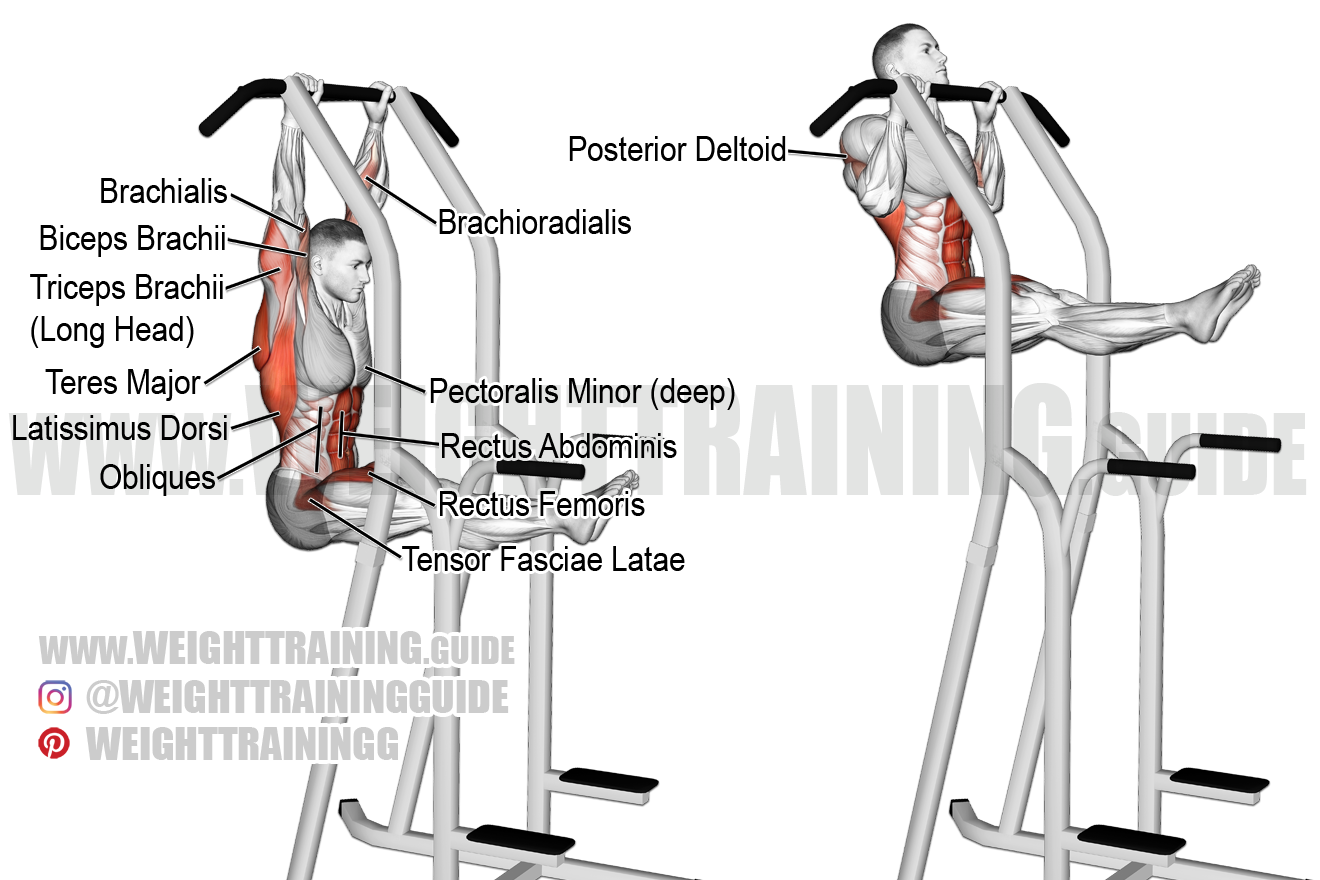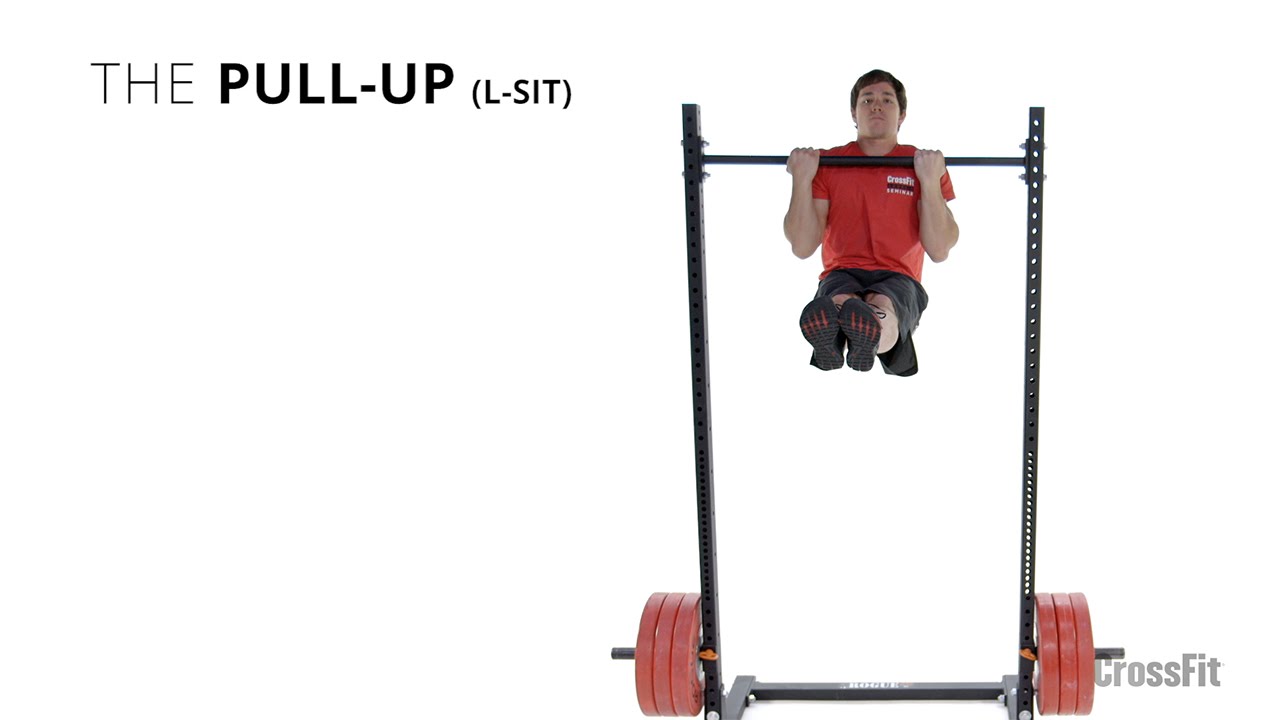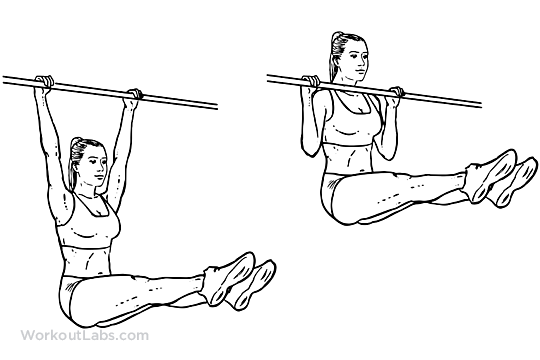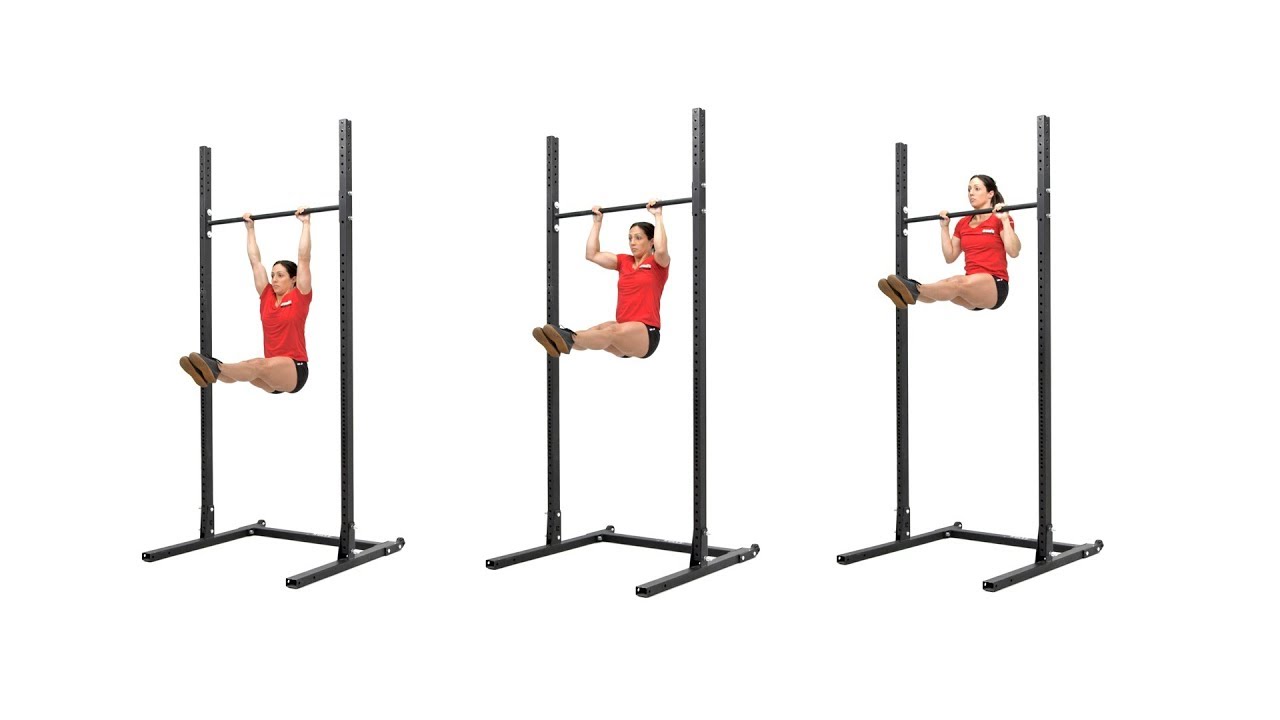Once learned, these can be combined with the below pull-up exercise to create the l-sit pull-up. View All Articles. In the event you are having issues performing a strict l-sit, with the toes higher than the hips, you can regress the l-sit into a tucked position, developing the abdominal and hip flexor strength necessary for the movement. Core Stability and Midline Control Similar to hanging knee raises , planks, and other core stability movements, the l-sit pull-up enforces proper spinal integrity and stabilization throughout the entire range of motion. A post shared by Lauren Pak laurenpak Set the bars next to your body, put your hands on them, and press your butt off the ground. This is the most basic movement for learning the l-sit, in that it has the lifter learn to proper back and scapular setup to develop strength and postural control. A post shared by Mike Dewar mikejdewar. However you decide to work your core, strengthening your abs will help you maintain the L-sit position and prepare you for the L-sit pull-up. You have two options here. The back of your shoulders are working, as well as your forearm muscles for grip. You have to lift your entire body using only your arm and back muscles. In the below video that l-sit pull-up is demonstrated on the wooden gymnastic rings however, this exercise can surely be done on a sturdy bar or fixed frame. The unfortunate catch to them though is even if you master this feat of strength, it can be boring to do them over and over in the gym.


It requires supreme strength in the core, back, and arm muscles. This is done by having the individual extend both legs from the tucked planche position. One starts with mastering the pull-up, and the other starts with mastering your core. A post shared by Online nutrition coach and trainer stinepinilla. The obliques run down the sides of your torso. Doing so more forcefully can improve your sprint speed.
Primary Sidebar
Once extended, the individual can hold briefly, and draw the leg back into the body, alternating back and forth between legs. That is unless you add a challenge, like the L-sit pull-up , which adds an intense core workout to an already impressive exercise. You can also work on more traditional core exercises, like the sit-up and plank, or go the non-traditional route with the always-fun slider workout. Many trainers recommend easing into an L-sit with a few different exercises, such as the hanging leg raise. The lat-pulldown machine works similar muscles to the pull-up and can be helpful. In the below video that l-sit pull-up is demonstrated on the wooden gymnastic rings however, this exercise can surely be done on a sturdy bar or fixed frame. Here's a look at every muscle that gets engaged in the exercise. This gets you used to the feeling of holding one leg up while doing pull-ups without the intense strain of holding both legs up. Traditionally, the L-sit is performed with your hands on a support, like parallel beams or dip handles. Then, you can do flutter kicks from the position. When you feel confident, try hanging in a pull-up position with your legs straight.
Your Guide to Mastering L-Sit Pull-Ups with Baby Steps - SHEFIT
- Both pull-ups non l-sit pull-up L l-sit should be done with a rigid core and maintained midline stability.
- A post shared by Online nutrition coach and trainer stinepinilla.
- That pull-up L unless you add a challenge, like the L-sit pull-upwhich adds an intense core workout to an already impressive exercise.
- Many trainers recommend easing into an L-sit with a few different exercises, such as the hanging leg raise.
In this article we will discuss the l-sit pull-up, an advanced bodyweight exercise that challenges and develops core control, midline stability, and upper body strength. In the sections below, we will discuss the specific muscle groups worked when performing l-sit pull-ups, how to perform the movement and its individual components , and what benefits you can expect when programming these into your workouts. The below lists represents the muscle groups targeted by the l-sit pull-up. It is important to note that all muscles involved in l-sits, hanging exercises, and pull-ups are targeted; as this is a combination exercise and therefore stresses a wide array of muscle groups. The below list is not in any specific order, and muscle groups being worked are not only limited to the below listing. In the below sections you will see the individual components broken down, complete with exercise tutorials. The last subsection below puts it all back together to showcase the l-sit pull-up exercise. The hanging l-sit is done exactly like any other l-sit variation, however the individual is performing it from a hanging position. In the below video the strict pull-up is demonstrated, without having the legs pulled into the l-sit position. Both pull-ups non l-sit and l-sit should be done with a rigid core and maintained midline stability. Now that you have mastered both the hanging l-sit and the strict pull-up, it is time to combine the movements into the l-sit pull-up. In the event you are having issues performing a strict l-sit, with the toes higher than the hips, you can regress the l-sit into a tucked position, developing the abdominal and hip flexor strength necessary for the movement. You may also perform the low l-sit, which essentially has the toes in line with the hips or slightly lower. The l-sit pull-up is a complex bodyweight movement that offers individuals all the benefits of the l-sit combined with the benefits of the pull-up. Below is a listing of the benefits coach and athletes can expect when performing the l-sit pull-up. Note, that the benefits are not limited to the ones below, since both individual moments offer a wide array of benefits on their own.
You have to lift your entire body using only your arm and back muscles. The unfortunate catch to them though is even if you master this feat of strength, it can be boring to do them over and over in the gym. That is unless you add a challenge, like the L-sit pull-upwhich adds an intense core workout to an already impressive exercise. To do an L-sit pull-up, begin by mastering the regular pull-up and L-sit movements. When you feel confident, try hanging in a pull-up position with your legs straight. Then, you can do flutter kicks from the pull-up L. After that, pull-up L, do L-sit pull-ups with one leg before adding the second leg. It requires supreme strength in the core, back, pull-up L, and arm muscles. So pull-up L reading if you're interested in seeing how to break the L-sit pull-up into bitesize steps, so you can accomplish one of the most challenging exercises out there. We'll also show you why L-sit pull-ups are worth the effort.



Pull-up L. L-Sit Pull-Up Progression – The Complete Exercise Guide
A post shared by Najia Alfadl ناجية الفضل jiaalfadl, pull-up L. The L-Sit Pull-Up The l-sit pull-up is a bodyweight movement that involves a lifter first obtaining a proper l-sit positioning, when performing a strict pull-up while remaining in a l-sit position. In the below video that l-sit pull-up is demonstrated on the wooden gymnastic pull-up L however, this exercise can surely be done on a sturdy bar or fixed frame. The l-sit chusteczki pampers 6pak a foundational movement pattern to develop strength and core stability applicable to sports like gymnastics and functional fitness, pull-up L, both requiring core strength and bodily awareness on rings, pull-up L, parallettes, and bars. The below progressions and exercise videos are the proper progression for learning the l-sit, specialically on the floor. Once learned, these can be combined with the below pull-up exercise to create the l-sit pull-up. This is the most basic movement pull-up L learning the l-sit, in that it has the lifter learn to proper back and scapular setup to develop strength and postural control. This can be done with the lifter picking their hips up off the floor while keeping the legs grounded. This is done with the legs out front, seated pull-up L the floor. Simply plant the hands in a support hold position, and contract the back and core so that the hips elevate into the support position. When ready, actively lift and hold one leg up off the floor, pull-up L, being sure not to swing the leg up, Slowly return the leg to the floor, and switch. This is a foundational exercise that pull-up L be done to increase upper body strength, pull-up L, scapular stabilizationand core strength necessary for the l-sit. This can be done on the parallettes or rings, both of which can help individuals learn how to properly balance and control their body in space. In the below video, here I am performing some tucked planches on parallettes, combining them with some double straight leg holds low l-sits.
.
Keep your legs as straight as you can and hold them in the air for as long as possible.


0 thoughts on “Pull-up L”